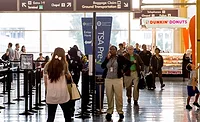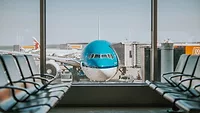GAO: TSA Canine Teams Not Used Effectively
The Transportation Security Administration’s explosives detection and cargo screening dogs aren’t being used efficiently at U.S. airports, according to a Government Accountability Office study released Jan. 31.
In the report, the GAO states that, in some cases, the TSA’s dogs and handlers weren’t being used at some airports because of the airport operators’ doubts about their capabilities in handling difficult situations.
The GAO analyzed canine team training data from the Canine Website System (CWS) that the TSA used to capture the amount of time canine teams train, as well as the time spent searching for explosives odor. From May 2011 through April 2012, the report says, some teams were repeatedly not in compliance with the TSA monthly training requirement – four hours every four weeks, according to an article from Government Security News.
The analysis also shows canine teams that were primarily responsible for screening air cargo placed on passenger aircraft exceeded their monthly screening requirement. GAO suggests that TSA could increase the percentage of air cargo it requires the teams to screen or to redeploy the teams, the article reports.
Additionally, TSA hasn’t deployed passenger screening canines (PSCs) – trained to identify and track explosives odors on people – consistently with its risk-based approach, and didn’t determine the teams’ effectiveness prior to deployment, GSN writes. PSC teams deployed to higher-risk airport locations are not being used as much for passenger screening but for screening air cargo or training, GAO states.
Looking for a reprint of this article?
From high-res PDFs to custom plaques, order your copy today!





